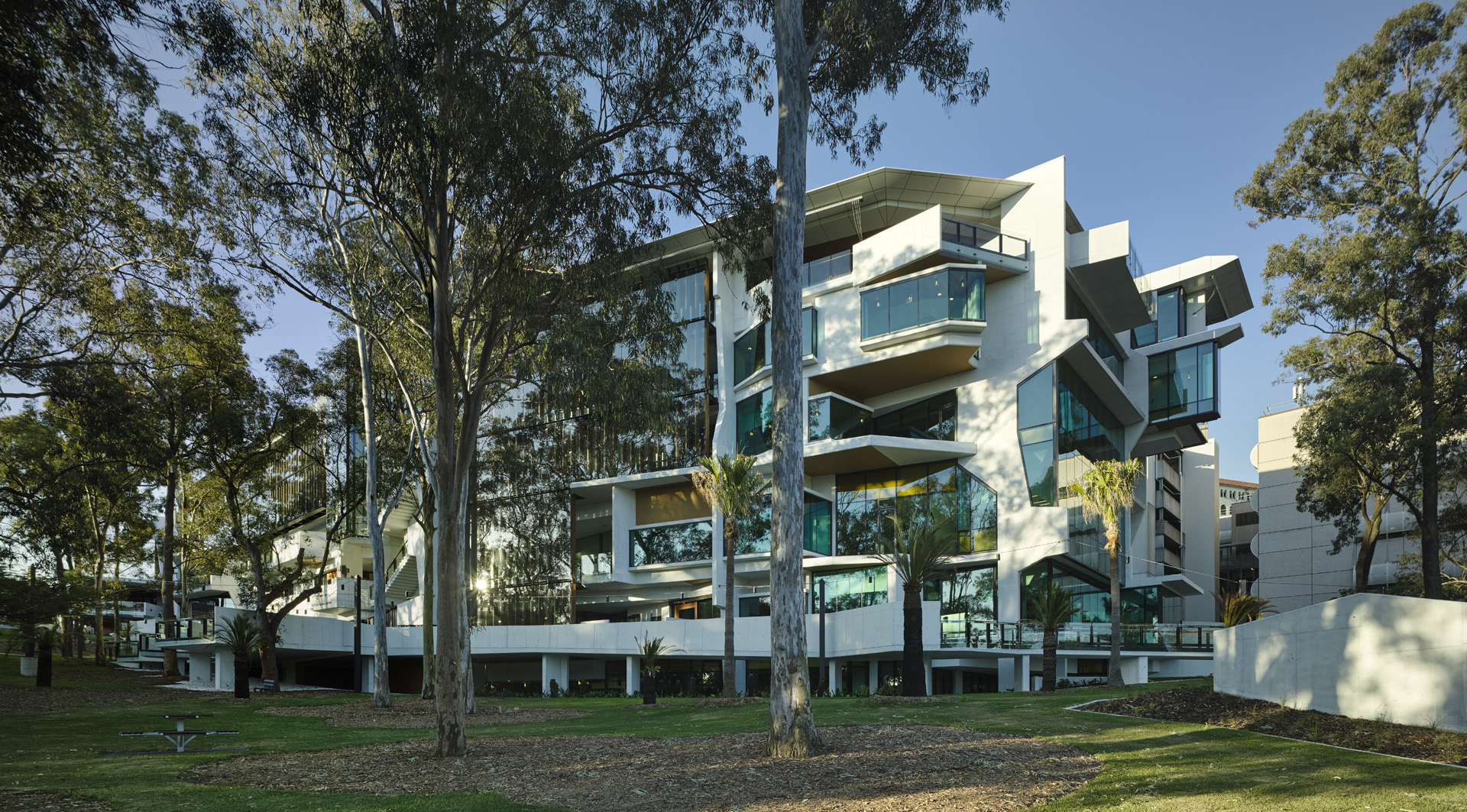UQ Oral Health Centre - Site Visit

The UQ Oral Health Centre explores new boundaries in teaching, research and clinical practice – Ben Doolan reports on the ACA – Qld/NT visit.
Members of the ACA –Qld/NT Branch recently attended a site tour of the newly opened Oral Health Centre (OHC) at the University of Queensland’s Herston campus. Casey Vallance, director of Cox Rayner, and Laurie Walsh, from UQ Oral Health, provided a brief overview of the building before we broke into two groups to explore the facility further.
The lead architect on the project was Cox Rayner, with heritage advice from Riddel Architects. The clinical facility interior design was provided by Hames Sharley. The architects worked closely with UQ dentistry staff to generate and test new design concepts and to evolve further ideas gained from an extensive review of international best practice in dental facility design. The outcome is a world-leading teaching, research and clinical practice facility that pushes new boundaries.
Approaching the building, the impression is of a striking, dynamic, visual presence – with abstract, white off-form concrete floor plates and overhangs, and tall vertical glass panels balanced with rich stained timber shading elements. Heat loading on the western facade is reduced via an innovative automated, naturally ventilated shaft employing the heat stack effect. While all of the clinical and teaching spaces were air conditioned, circulation and breakout spaces were naturally ventilated harnessing prevailing air movement located to exploit western outlooks to the adjacent park.
Circulation spaces throughout the building maintain a visual connection to the outside via large openings, allowing occupants to orientate themselves. These openings also allow natural light to filter deep within the building. The building provides a successful first impression of a school expressing its intention to be cutting edge and forward looking. In addition to interesting custom-made light fixtures, the use of wall tiles for wayfinding in a generous array of colours and textures surprisingly depicted, in some cases, Morse code!
The OHC carefully and sensitively engages and respects the heritage-listed Mayne Medical School. It links the Medical School to the Royal Brisbane Hospital campus, while ensuring the building’s existing site lines are maintained. The main axis of this link is via a five-storey central plaza, which provides an interaction space between students, staff and health professionals. Student breakout spaces were particularly appealing, with high quality furnishings giving an almost flight lounge feel.
Located on the lower levels of the OHC are state-of-the-art student and public clinics covering a number of dental specialties strategically positioned for good public access. The lower levels also include a variety of flexible teaching spaces reflecting the school’s forward thinking on pedagogy, especially in terms of new models of collaborative and multidisciplinary learning approaches. Teaching spaces are able to be quickly adapted and combined to suit small tutorial sessions, seminars, workshops, presentations, informal and formal gatherings and formal functions.
The upper levels consists of simulation and research laboratories and further specialist clinics, along with an undergraduate student centre, postgraduate, academic and professional staff offices and meeting rooms.
Of particular interest was the design of the suites within the dental clinics. Highly considered design resolution resulted in innovative approaches to long-standing conventions in dental education and clinical practice. Instead of suites having fixed joinery under work benches, mobile units allow quick change over of sessions and change of use, dramatically improving number of sessions per day and allowing a greater breadth of procedures to be undertaken. Clever attention has been applied to concealing consumables like glove dispensers and waste via built-in dedicated integral joinery enclosures, all helping to reduce patient anxiety. Teaching suites had glass sliding doors and full-height glazed walls to corridors, providing excellent observational supervision by senior dental staff. This affords a balance between patient privacy and dental student supervision.
Flexible student spaces allow for individual study and collaborative learning through a range of open plan zones around the perimeter and fully glazed interior quiet rooms. Carefully placed windows assists filtered natural light to enter and for a visual connection to the surrounding campus. Extensive use of timber and warm tactile materials set the tone for focused study.
The attendees and the ACA greatly appreciate the time given by Casey Vallance, Laurie Walsh and Kim Wishart of UQ to offer their insights and background on their journey from design concept to operational building.
Ben Doolan is an architect at Jackson Architecture. The ACA – Qld/NT site visit at the UQ OHC was held on 10 February, 2015. Photographs Christopher Frederick Jones.
